Abstract
An anaerobic, gram-positive diplobacillus that reduces cholesterol to coprostanol was isolated from human feces and rat cecal contents. The isolates closely resemble a cholesterol-reducing organism isolated by Eyssen et al. (H. Eyssen et al., Eur. J. Biochem. 36:412-421, 1973) from a rat's cecum. These organisms would not form colonies and were isolated and cultivated in an anaerobic medium containing homogenized pork brains (naturally high in cholesterol). These organisms require free or esterified cholesterol for growth. They were isolated by serially diluting feces or cecal contents and inoculating brain medium. Colony-forming organisms, which did not reduce cholesterol, were eliminated by addition of inhibitory agents to the brain medium cultures. This serial dilution procedure was performed until a pure culture of a cholesterol-reducing organism was obtained.
Full text
PDF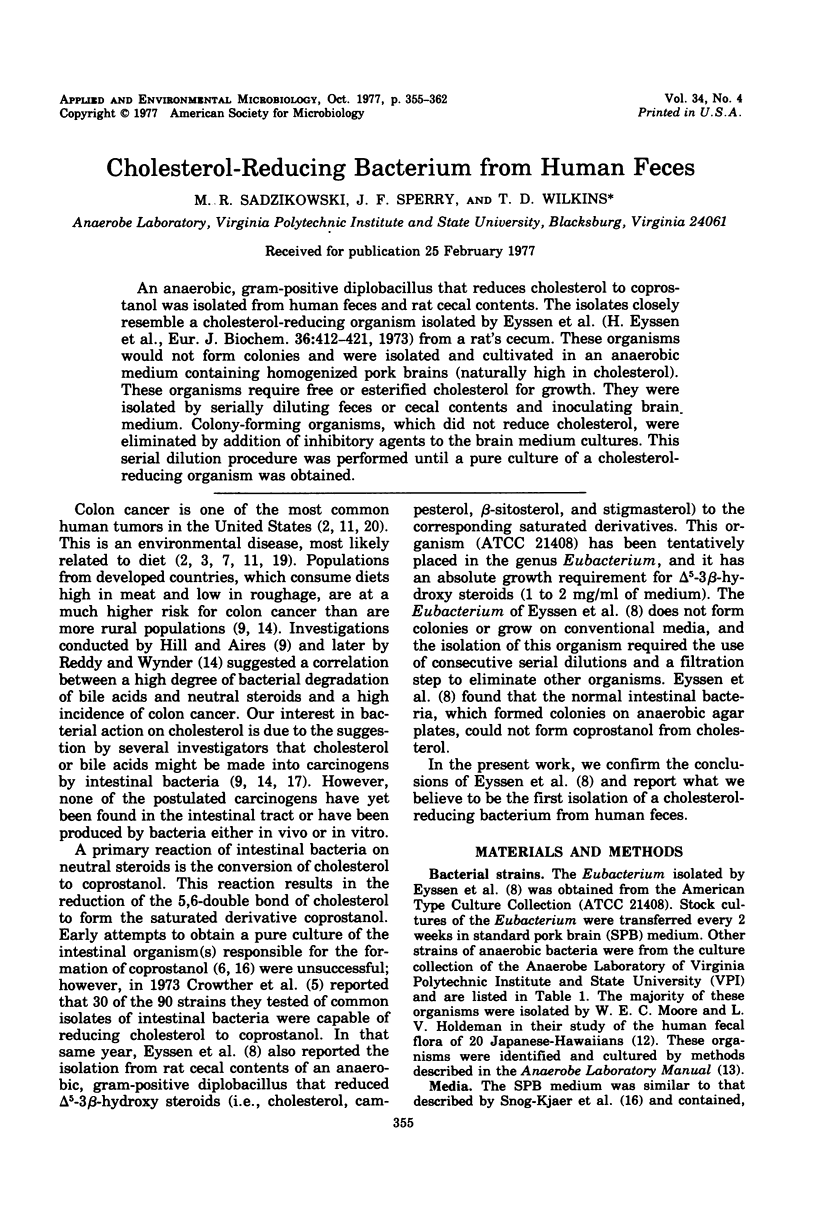
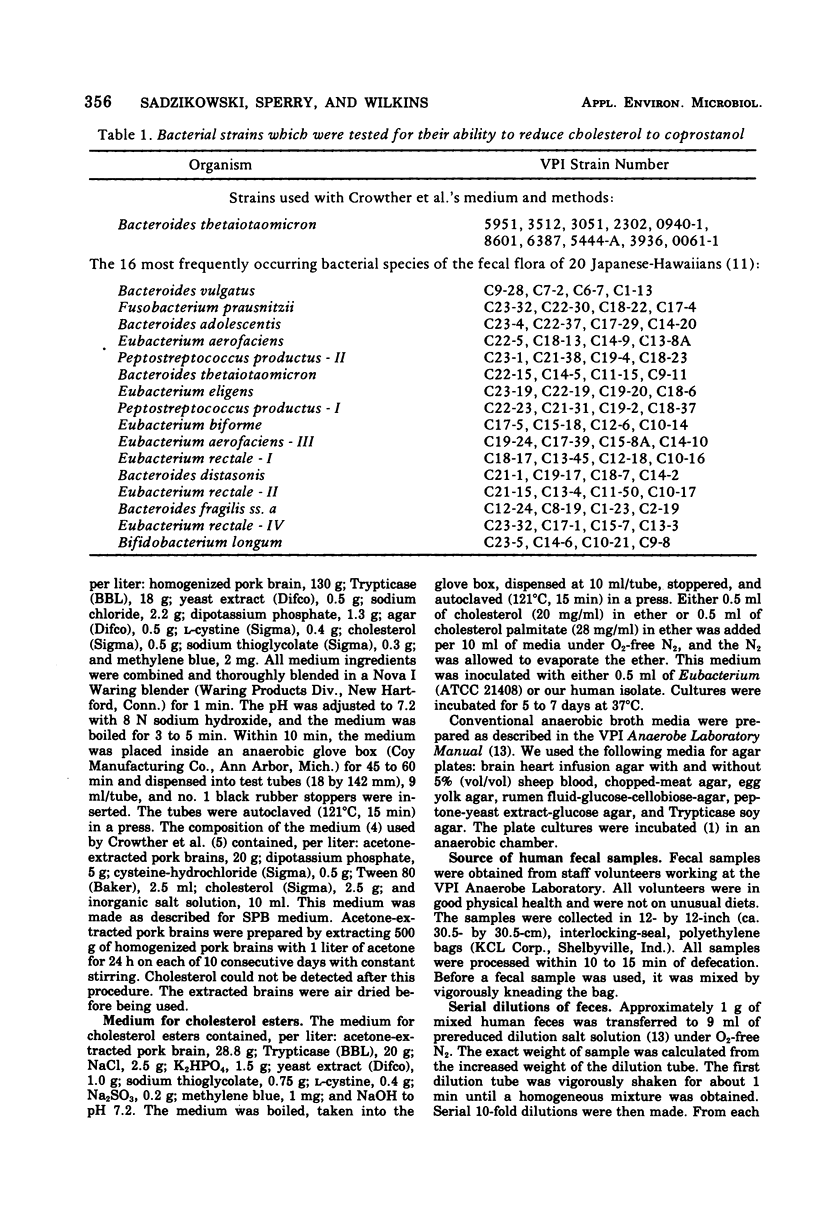
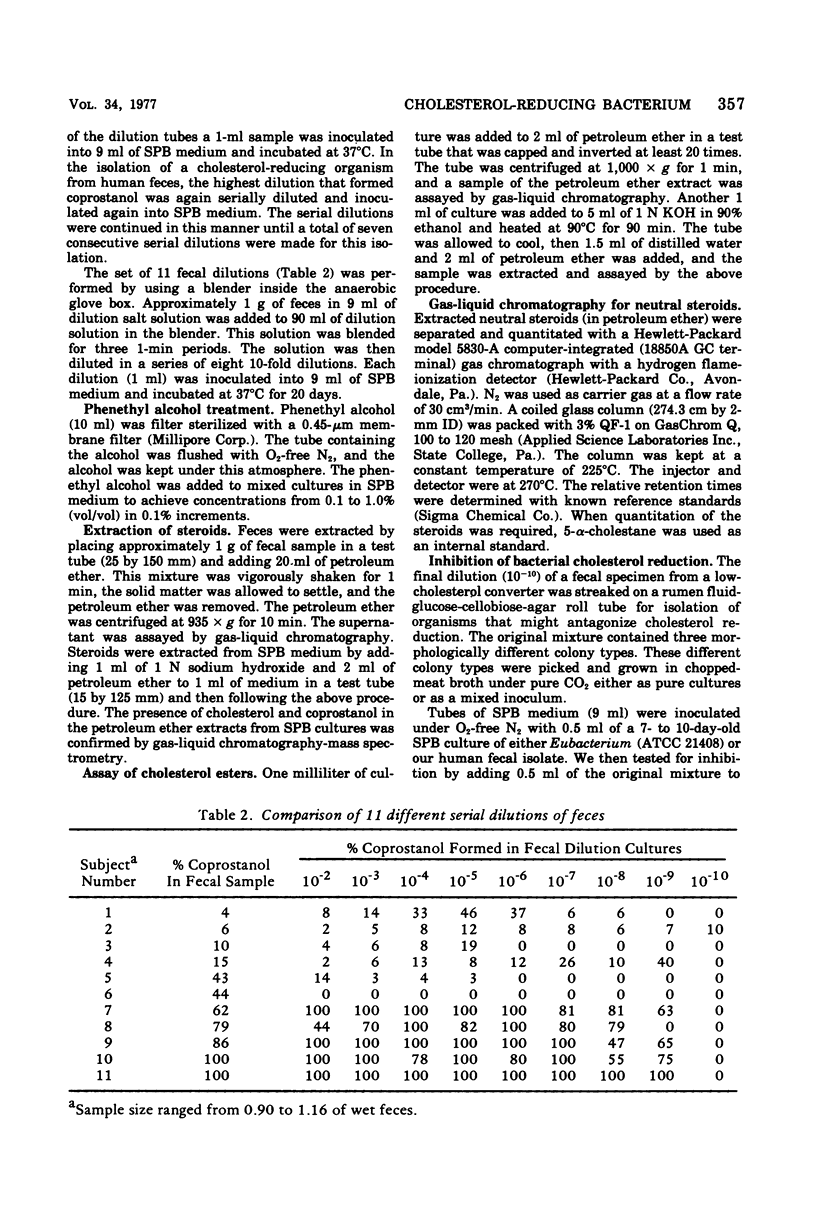
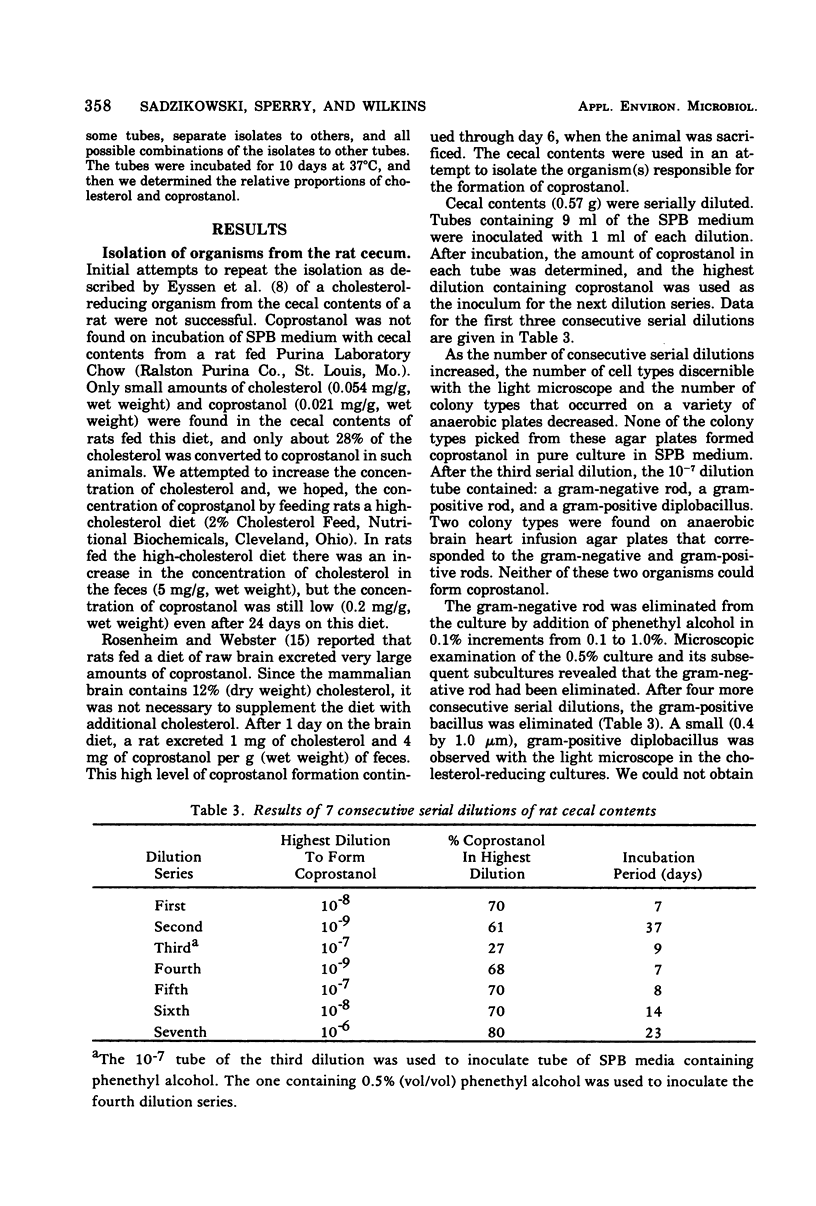
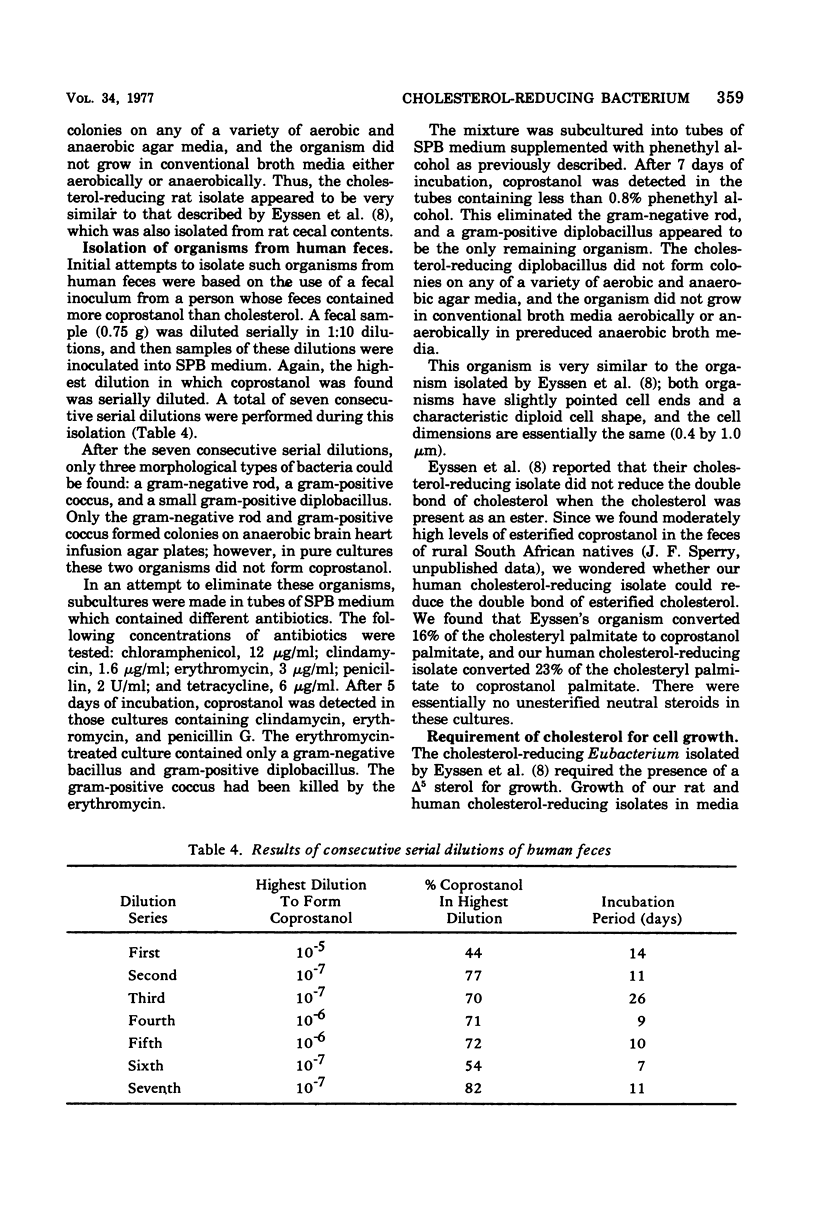
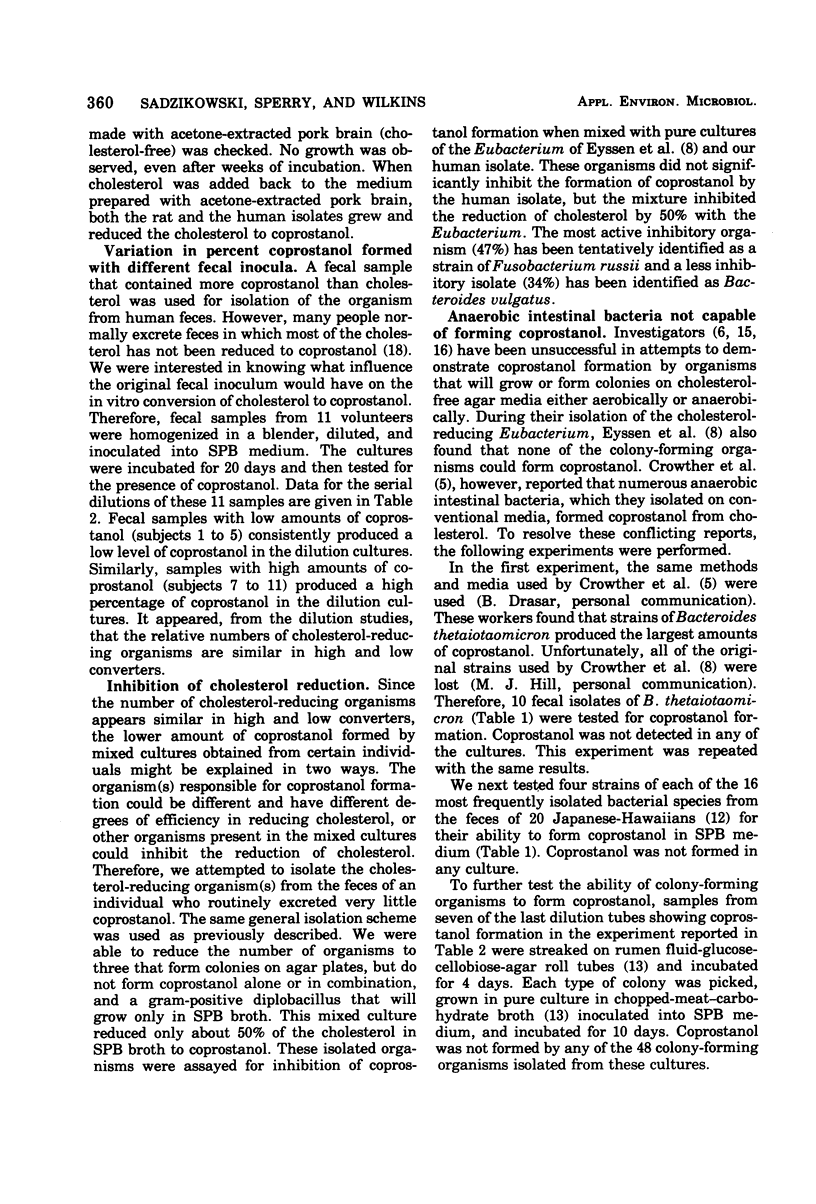
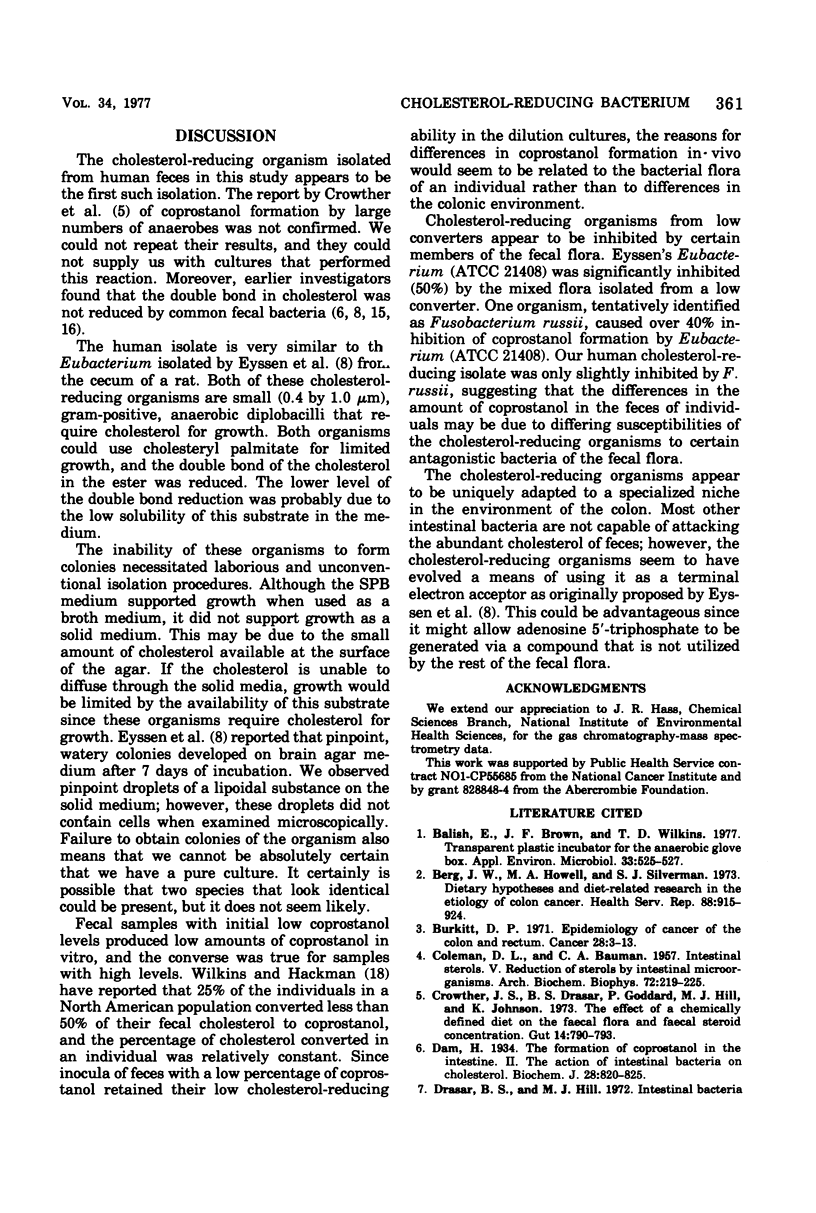
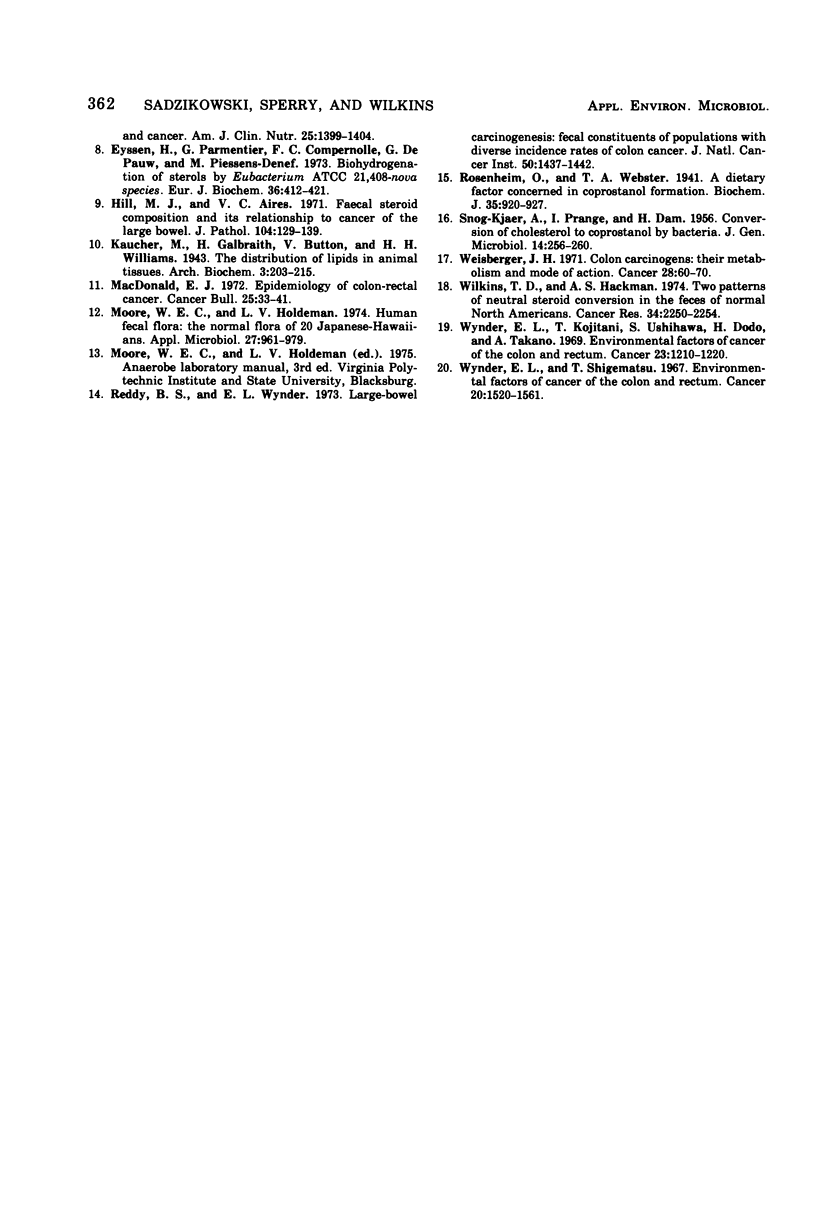
Selected References
These references are in PubMed. This may not be the complete list of references from this article.
- Balish E., Brown J. F., Wilkins T. D. Transparent plastic incubator for the anaerobic glove box. Appl Environ Microbiol. 1977 Mar;33(3):525–527. doi: 10.1128/aem.33.3.525-527.1977. [DOI] [PMC free article] [PubMed] [Google Scholar]
- Berg J. W., Howell M. A., Silverman S. J. Dietary hypotheses and diet-related research in the etiology of colon cancer. Health Serv Rep. 1973 Dec;88(10):915–924. [PMC free article] [PubMed] [Google Scholar]
- Burkitt D. P. Epidemiology of cancer of the colon and rectum. Cancer. 1971 Jul;28(1):3–13. doi: 10.1002/1097-0142(197107)28:1<3::aid-cncr2820280104>3.0.co;2-n. [DOI] [PubMed] [Google Scholar]
- COLEMAN D. L., BAUMANN C. A. Intestinal sterols. V. Reduction of sterols by intestinal microorganisms. Arch Biochem Biophys. 1957 Nov;72(1):219–225. doi: 10.1016/0003-9861(57)90188-1. [DOI] [PubMed] [Google Scholar]
- Crowther J. S., Drasar B. S., Goddard P., Hill M. J., Johnson K. The effect of a chemically defined diet on the faecal flora and faecal steroid concentration. Gut. 1973 Oct;14(10):790–793. [PMC free article] [PubMed] [Google Scholar]
- Dam H. The formation of coprosterol in the intestine: The action of intestinal bacteria on cholesterol. Biochem J. 1934;28(3):820–825. doi: 10.1042/bj0280820. [DOI] [PMC free article] [PubMed] [Google Scholar]
- Eyssen H. J., Parmentier G. G., Compernolle F. C., De Pauw G., Piessens-Denef M. Biohydrogenation of sterols by Eubacterium ATCC 21,408--Nova species. Eur J Biochem. 1973 Jul 16;36(2):411–421. doi: 10.1111/j.1432-1033.1973.tb02926.x. [DOI] [PubMed] [Google Scholar]
- Hill M. J., Aries V. C. Faecal steroid composition and its relationship to cancer of the large bowel. J Pathol. 1971 Jun;104(2):129–139. doi: 10.1002/path.1711040207. [DOI] [PubMed] [Google Scholar]
- Moore W. E., Holdeman L. V. Human fecal flora: the normal flora of 20 Japanese-Hawaiians. Appl Microbiol. 1974 May;27(5):961–979. doi: 10.1128/am.27.5.961-979.1974. [DOI] [PMC free article] [PubMed] [Google Scholar]
- Reddy B. S., Wynder E. L. Large-bowel carcinogenesis: fecal constituents of populations with diverse incidence rates of colon cancer. J Natl Cancer Inst. 1973 Jun;50(6):1437–1442. doi: 10.1093/jnci/50.6.1437. [DOI] [PubMed] [Google Scholar]
- Rosenheim O., Webster T. A. A dietary factor concerned in coprosterol formation. Biochem J. 1941 Sep;35(8-9):920–927. doi: 10.1042/bj0350920. [DOI] [PMC free article] [PubMed] [Google Scholar]
- SNOG-KJAER A., PRANGE I., DAM H. Conversion of cholesterol into coprosterol by bacteria in vitro. J Gen Microbiol. 1956 Apr;14(2):256–260. doi: 10.1099/00221287-14-2-256. [DOI] [PubMed] [Google Scholar]
- Weisburger J. H. Colon carcinogens: their metabolism and mode of action. Cancer. 1971 Jul;28(1):60–70. doi: 10.1002/1097-0142(197107)28:1<60::aid-cncr2820280113>3.0.co;2-u. [DOI] [PubMed] [Google Scholar]
- Wilkins T. D., Hackman A. S. Two patterns of neutral steroid conversion in the feces of normal North Americans. Cancer Res. 1974 Sep;34(9):2250–2254. [PubMed] [Google Scholar]
- Wynder E. L., Kajitani T., Ishikawa S., Dodo H., Takano A. Environmental factors of cancer of the colon and rectum. II. Japanese epidemiological data. Cancer. 1969 May;23(5):1210–1220. doi: 10.1002/1097-0142(196905)23:5<1210::aid-cncr2820230530>3.0.co;2-m. [DOI] [PubMed] [Google Scholar]
- Wynder E. L., Shigematsu T. Environmental factors of cancer of the colon and rectum. Cancer. 1967 Sep;20(9):1520–1561. doi: 10.1002/1097-0142(196709)20:9<1520::aid-cncr2820200920>3.0.co;2-3. [DOI] [PubMed] [Google Scholar]


